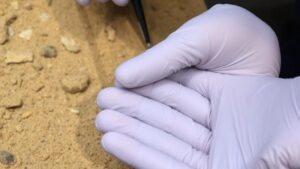Using Historical Linguistics to Translate and Decode Old Treasure Clues
Using Historical Linguistics to Translate and Decode Old Treasure Clues
Historical linguistics, the study of language change over time, plays a pivotal role in deciphering old treasure clues. By analyzing the evolution of language, linguists can interpret ancient texts, leading to the discovery of hidden treasures. This article explores the techniques of historical linguistics to translate and decode treasure-related clues from the past, illustrating its applications through rich examples and case studies.
The Basics of Historical Linguistics
Historical linguistics focuses on how languages evolve, including phonetic shifts, grammatical changes, and shifts in semantics. At the core of the discipline lies the comparative method, which involves comparing similarities and differences among languages to ascertain their historical connections. For deciphering old treasure clues, the following elements are crucial:
- Etymology: Understanding the origin of words can reveal hidden meanings that inform treasure hunters where to dig.
- Sound Changes: Identifying how words have transformed phonemically over time helps reconstruct probable meanings.
- Dialect Analysis: Regional dialects provide clues about historical context, revealing not just location, but also cultural significance.
Case Study: Decoding the Celtiberian Treasure Map
A remarkable instance of historical linguistics applied to treasure deciphering involves the Celtiberian treasure map discovered in Iberia. The map features inscriptions in an ancient form of the Iberian language, which posed a significant challenge. Researchers utilized comparative linguistics to connect Celtic and Iberian roots, eventually identifying geographic markers that pinpointed possible treasure locations.
For example, the term druida, revealing connections to a druidic tradition, implied that the treasure was buried near ancient sacred sites, ultimately leading to a significant find in the region of modern-day Spain.
Methods Employed in Historical Linguistics
Decoding ancient treasure clues is no simple task. The methodologies of historical linguistics include:
- Comparative Analysis: Linguists compare related languages to reconstruct original forms of words and phrases, enabling interpretative breakthroughs.
- Philological Techniques: The study of ancient texts using spectral imaging and other advanced techniques allows scholars to read inscriptions that have faded over time.
- Cross-Disciplinary Approaches: Collaborations with historians, archaeologists, and even cryptographers are essential for contextual understanding and innovative interpretations.
Application of Statistical Tools
Modern advancements have introduced statistical tools that aid in the analysis of historical texts. For example, quantitative linguistics allows researchers to track the frequency of specific terms across multiple languages, making it easier to discern connections. A practical application of this is found in the analysis of treasure maps from the 18th century, where tracking the prevalence of maritime terminology led to the identification of pirate hideouts.
Challenges in Translating Old Clues
Despite the rigorous methods, several challenges persist in the use of historical linguistics:
- Incomplete Records: Many ancient languages left insufficient written records, complicating translation.
- Semantic Shifts: Meanings of words can change drastically over time, making literal translations misleading.
- Cultural Context: Understanding the cultural relevance of clues is often necessary but can be difficult to ascertain.
Real-World Implications of Linguistic Discoveries
The quest for lost treasures not only drives individual pursuits but can also foster tourism and enhance local economies. For example, the successful application of linguistics in decoding a treasure clue in a colonial American context led to the revival of interest in historical societies, consequently increasing local tourism and education initiatives.
Conclusion and Actionable Takeaways
Historical linguistics offers invaluable tools for translating and decoding old treasure clues, combining scholarly rigor with adventurous pursuits. Individuals interested in this discipline or treasure hunting should:
- Familiarize themselves with foundational concepts in linguistic history.
- Explore local libraries or archives for ancient texts that can offer translation opportunities.
- Consider collaboration with professionals in linguistics, archaeology, and history to enhance research efforts.
Ultimately, through the lens of historical linguistics, the past continues to whisper its secrets, guiding intrepid explorers to the treasures of history.



